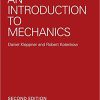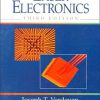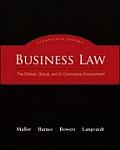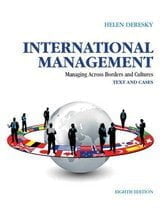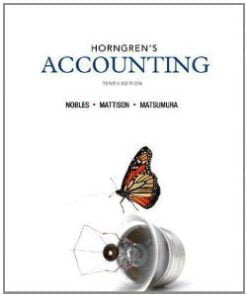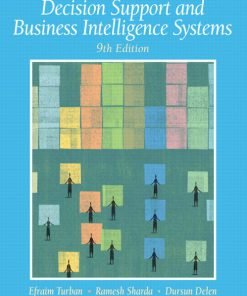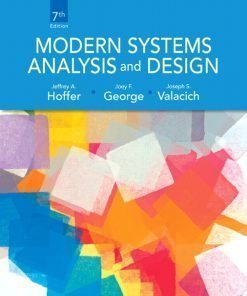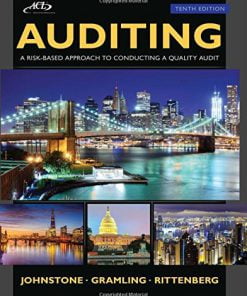Solution Manual for Statistics for Nursing Research A Workbook for Evidence-Based Practice, 3rd Edition, Susan Grove Daisha Cipher
$55.00 Original price was: $55.00.$29.99Current price is: $29.99.
Solution Manual for Statistics for Nursing Research A Workbook for Evidence-Based Practice, 3rd Edition, Susan Grove, Daisha Cipher,
This is completed downloadable of Solution Manual for Statistics for Nursing Research A Workbook for Evidence-Based Practice, 3rd Edition, Susan Grove, Daisha Cipher
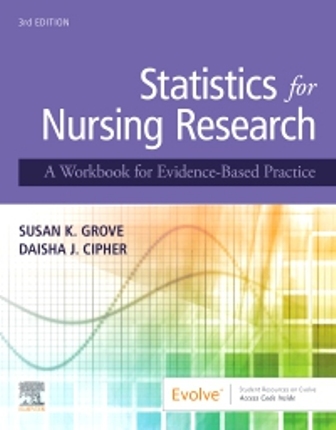
Product Details:
- ISBN-10 : 0323654118
- ISBN-13 : 978-0323654111
- Author: Susan Grove, Daisha Cipher
Learn how to expand your interpretation and application of statistical methods used in nursing and health sciences research articles with Statistics for Nursing Research: A Workbook for Evidence-Based Practice, 3rd Edition. Perfect for those seeking to more effectively build an evidence-based practice, this collection of practical exercises guides you in how to critically appraise sampling and measurement techniques, evaluate results, and conduct a power analysis for a study. Written by nursing research and statistics experts Drs. Susan K. Grove and Daisha Cipher, this is the only statistics workbook for nurses to include research examples from both nursing and the broader health sciences literature. This new third edition features new research article excerpts and examples, an enhanced focused on statistical methods commonly used in DNP projects, new examples from quality improvement projects, new content on paired samples analysis, expanded coverage of calculating descriptive statistics, an online Research Article Library, and more! Whether used in undergraduate, master’s, or doctoral education or in clinical practice, this workbook is an indispensable resource for any nursing student or practicing nurse needing to interpret or apply statistical data.
Table of Content:
- Part 1: Understanding Statistical Methods
- 1. Identifying levels of measurement: Nominal, ordinal, interval, and ratio
- Statistical technique in review
- Research article
- Study questions
- Answers to study questions
- Exercise 1 Questions to be graded
- 2. Identifying probability and nonprobability sampling methods in studies
- Statistical technique in review
- Study questions
- Answers to study questions
- Exercise 2 Questions to be graded
- 3. Understanding the sampling section of a research report: Population, sampling criteria, sample size, refusal rate, and attrition rate
- Statistical technique in review
- Research article
- Study questions
- Answers to study questions
- Exercise 3 Questions to be graded
- 4. Understanding reliability of measurement methods
- Statistical technique in review
- Research article
- Study questions
- Answers to study questions
- Exercise 4 Questions to be graded
- 5. Understanding validity of measurement methods
- Statistical technique in review
- Research article
- Study questions
- Answers to study questions
- Exercise 5 Questions to be graded
- 6. Understanding frequencies and percentages
- Statistical technique in review
- Research article
- Study questions
- Answers to study questions
- Exercise 6 Questions to be graded
- 7. Interpreting line graphs
- Statistical technique in review
- Research article
- Study questions
- Answers to study questions
- Exercise 7 Questions to be graded
- 8. Measures of central tendency: Mean, median, and mode
- Statistical technique in review
- Research article
- Study questions
- Answers to study questions
- Exercise 8 Questions to be graded
- 9. Measures of dispersion: Range and standard deviation
- Statistical technique in review
- Research article
- Study questions
- Answers to study questions
- Exercise 9 Questions to be graded
- 10. Description of a study sample
- Statistical technique in review
- Research article
- Study questions
- Answers to study questions
- Exercise 10 Questions to be graded
- 11. Interpreting scatterplots
- Statistical technique in review
- Research article
- Study questions
- Answers to study questions
- Exercise 11 Questions to be graded
- 12. Algorithm for determining the appropriateness of inferential statistical techniques
- Statistical technique in review
- Study questions
- Answers to study questions
- Exercise 12 Questions to be graded
- 13. Understanding Pearson product-moment correlation coefficient
- Statistical technique in review
- Research article
- Study questions
- Answers to study questions
- Exercise 13 Questions to be graded
- 14. Understanding simple linear regression
- Statistical technique in review
- Research article
- Study questions
- Answers to study questions
- Exercise 14 Questions to be graded
- 15. Understanding multiple linear regression
- Statistical technique in review
- Research article
- Study questions
- Answers to study questions
- Exercise 15 Questions to be graded
- 16. Understanding independent samples t-test
- Statistical technique in review
- Research article
- Study questions
- Answers to study questions
- Exercise 16 Questions to be graded
- 17. Understanding paired or dependent samples t-test
- Statistical technique in review
- Research article
- Study questions
- Answers to study questions
- Exercise 17 Questions to be graded
- 18. Understanding analysis of variance (ANOVA) and post hoc analyses
- Statistical technique in review
- Research article
- Study questions
- Answers to study questions
- Exercise 18 Questions to be graded
- 19. Understanding Pearson chi-square
- Statistical technique in review
- Research article
- Study questions
- Answers to study questions
- Exercise 19 Questions to be graded
- 20. Understanding Spearman rank-order correlation coefficient
- Statistical technique in review
- Research article
- Study questions
- Answers to study questions
- Exercise 20 Questions to be graded
- 21. Understanding Mann-Whitney U test
- Statistical technique in review
- Research article
- Study questions
- Answers to study questions
- Exercise 21 Questions to be graded
- 22. Understanding Wilcoxon signed-rank test
- Statistical technique in review
- Research article
- Study questions
- Answers to study questions
- Exercise 22 Questions to be graded
- Part 2: Conducting and Interpreting Statistical Analyses
- 23. Selecting appropriate analysis techniques for studies
- Statistics to address basic difference research questions and hypotheses
- Statistics to address basic associational/correlational research questions and hypotheses
- Applying inferential statistics to population data
- Study questions
- Answers to study questions
- Exercise 23 Questions to be graded
- 24. Describing the elements of power analysis: Power, effect size, alpha, and sample size
- Effect size
- Study questions
- Answers to study questions
- Exercise 24 Questions to be graded
- 25. Conducting power analysis
- Power analysis 1: Cohen’s d
- Power analysis 2: Cohen’s f
- Power analysis 3: Pearson r
- Power analysis 4: R2
- Power analysis 5: Odds ratio
- Power analysis 6: d
- Power analysis 7: Cohen’s dz
- Study questions
- Answers to study questions
- Exercise 25 Questions to be graded
- 26. Determining the normality of a distribution
- The normal curve
- Skewness
- Kurtosis
- Tests of normality
- SPSS computation
- Interpretation of SPSS output
- Study questions
- Answers to study questions
- Data for additional computational practice for questions to be graded
- Exercise 26 Questions to be graded
- 27. Calculating descriptive statistics
- Measures of central tendency
- Measures of dispersion
- Sampling error
- SPSS computations
- Interpretation of SPSS output
- Study questions
- Answers to study questions
- Exercise 27 Questions to be graded
- 28. Calculating Pearson product-moment correlation coefficient
- Research designs appropriate for the Pearson r
- Statistical formula and assumptions
- Hand calculations
- SPSS computations
- Interpretation of SPSS output
- Final interpretation in American Psychological Association (APA) format
- Effect size
- Study questions
- Answers to study questions
- Data for additional computational practice for questions to be graded
- Exercise 28 Questions to be graded
- 29. Calculating simple linear regression
- Research designs appropriate for simple linear regression
- Statistical formula and assumptions
- Hand calculations
- SPSS computations
- Interpretation of SPSS output
- Final interpretation in American Psychological Association (APA) format
- Study questions
- Answers to study questions
- Data for additional computational practice for the questions to be graded
- Exercise 29 Questions to be graded
- 30. Calculating multiple linear regression
- Research designs appropriate for multiple linear regression
- Statistical formula and assumptions
- SPSS computations
- Interpretation of SPSS output
- Final interpretation in American Psychological Association (APA) format
- Study questions
- Answers to study questions
- Exercise 30 Questions to be graded
- 31. Calculating t-tests for independent samples
- Research designs appropriate for the independent samples t-test
- Statistical formula and assumptions
- Hand calculations
- SPSS computations
- Interpretation of SPSS output
- Final interpretation in American Psychological Association (APA) format
- Study questions
- Answers to study questions
- Data for additional computational practice for questions to be graded
- Exercise 31 Questions to be graded
- 32. Calculating t-tests for paired (dependent) samples
- Research designs appropriate for the paired samples t-test
- Statistical formula and assumptions
- Hand calculations
- SPSS computations
- Interpretation of SPSS output
- Final interpretation in American Psychological Association (APA) format
- Answers to study questions
- Data for additional computational practice for questions to be graded
- Exercise 32 Questions to be graded
- 33. Calculating analysis of variance (ANOVA) and post hoc analyses following ANOVA
- Research designs appropriate for the one-way ANOVA
- Statistical formula and assumptions
- Hand calculations
- SPSS computations
- Interpretation of SPSS output
- Final interpretation in American Psychological Association (APA) format
- Study questions
- Answers to study questions
- Data for additional computational practice for questions to be graded
- Exercise 33 Questions to be graded
- 34. Calculating sensitivity and specificity
- Statistical formula and assumptions
- Hand calculations
- SPSS computations
- Interpretation of SPSS output
- Study questions
- Answers to study questions
- Data for additional computational practice for questions to be graded
- Exercise 34 Questions to be graded
- 35. Calculating Pearson chi-square
- Research designs appropriate for the Pearson χ2
- Statistical formula and assumptions
- Hand calculations
- SPSS computations
- Interpretation of SPSS output
- Final interpretation in American Psychological Association (APA) format
- Study questions
- Answers to study questions
- Data for additional computational practice for questions to be graded
- Exercise 35 Questions to be graded
- 36. Calculating odds ratio and 95% confidence intervals
- Research designs appropriate for the odds ratio
- Statistical formula and assumptions
- Hand calculations
- SPSS computations
- Interpretation of SPSS output
- Final interpretation in American Psychological Association (APA) format
- Study questions
- Answers to study questions
- Data for additional computational practice for questions to be graded
- Exercise 36 Questions to be graded
- References
- Appendix A: Critical values for student’s t distribution
- Appendix B: Critical values of r for Pearson product moment correlation coefficient
- Appendix C: Critical values of F for α = 005 and α = 001
- Appendix D: Critical values of the χ2 distribution
- Index
- Inside back cover
- Contents
People Also Search:
statistics for nursing research a workbook for evidence based practice
statistics for nursing research a workbook for evidence based practice 3rd edition
statistics for nursing research a workbook for evidence based practice download scribd
statistics for nursing research a workbook for evidence based practice solution manual download pdf
Related products
Solution Manual
Solution Manual
Solution Manual
Solution Manual
Solution Manual
Solution Manual
Auditing A Risk Based-Approach to Conducting a Quality Audit Johnstone 10th Edition Solutions Manual
Solution Manual


